An Interview with Demand Studios Editor, Robyn Galbos
 We are lucky to have Robyn Galbos from Demand Studios with us today to answer some questions we've received about becoming a writer for them. She has provided some tips for applying and writing articles and information about some of the new Demand Studios programs, so let's get started! WOW: Hi, Robyn. Thank you for taking time out to talk with The Muffin about writing for Demand Studios. What kind of writers are Demand Studios looking for? Specific genres? Certain experience or college degrees? Robyn: Demand Studios is looking for all kinds of writers with a variety of backgrounds and interests. We are primarily looking for people with solid researching and reporting skills, and ideal candidates have had their work published in print or online. During the application process, writers must upload a résumé and a writing sample; the stronger the writing sample, the more likely the writer will be accepted.
WOW: So, writers can use their knowledge they gain from hobbies and other careers to write articles and make extra money on Demand Studios. What are two or three tips you can give writers who are applying for positions? Robyn: First, take the application process as seriously as you would for a full-time position. Because this is an independent contractor position, sometimes writers think that they don't need to try as hard. Upload a recent résumé that highlights your writing experience and any expertise you may have. Proofread your résumé for typos. Typos in a résumé are a red flag when you're applying for a writing position. Second, put your best foot forward with your writing sample. Take time to research the sites for which you are applying to write, and take note of the voice and tone of the writing. Attach writing samples that would fit well on those sites. If you don't have published work, try writing an article in the style of eHow, LIVESTRONG, Garden Guides or any other site you're interested in. Be sure to submit original work as your writing sample, however, and remember to proofread your submission for typos as well. WOW: Thanks for the tips, Robyn. Many writers can write 400- to 500-word articles quickly; and therefore, they write several Demand Studios articles a day in a short amount of time. What are some tips for writing Demand Studios articles in a timely manner? Robyn: The simplest answer is "write what you know." The more you venture into topics that are not your area of expertise, the more time you will take to research and write the articles. If you know a topic, you likely know where to find the most credible references. A word of caution: Even though you know a topic, resist the urge to write off the top of your head without researching. We require references for every article, and facts must be verifiable by the copy editors. I also recommend that writers master one format before moving on to others. Once you understand the guidelines and nuances for a particular format, you get in a rhythm and can work a lot faster. Finally, really take the time to familiarize yourself with all of the Demand Studios guidelines. This will help save time on rewrite requests. WOW: More great tips. It seems like if writers take time at the beginning to learn about the templates and different types of articles, they will work quicker and more accurately in a few months. Demand Studios allows writers to suggest articles they would like to write. Please explain to us how this process works. Are these articles paid the same rates as articles that Demand Studios assigns? Robyn: Writers may create their own assignments in Demand Studios, and approved articles are paid on a revenue-share basis. We are looking for titles that revolve around a topical theme while remaining evergreen. For example, articles around filing your tax returns are perfect in the early part of the year. WOW: Sometimes, Demand Studios editors have to send articles back to writers to fix. What are some of the most common reasons why writers get their work sent back to them? Robyn: Every article that is submitted through the Demand Studios publishing tools is edited and fact-checked by a copy editor, and we consider rewrites to be a natural part of the editorial process. Copy editors look at articles with the eye of a reader. If there are questions about clarity or facts, the editor may need to ask the writer some questions. The most common reasons for rewrites are unverifiable facts, guideline violations, unclear sentence structure, or vague statements. An editor may also send an article back if the article does not directly answer the question put forth in the title or is not specific enough to address the title accurately. Writers who study the guidelines, do research, and cite their sources likely will receive fewer rewrite requests. WOW: So, copy editors and writers work together to make the articles as clear and accurate as possible. That makes perfect sense! Many Demand Studios writers make an average of $15 an article, but there are ways to make between $20 and $80 an article. Please explain how writers can make more money per article and about your new specialty writers program. Robyn: Demand Studios has several levels of special assignments that we reserve for our best writers: that is, writers who consistently deliver high-quality articles written according to all applicable guidelines. These higher-paying opportunities are for Demand Media sites and for our partner sites and include premium assignments for our copy editors. We regularly review our creator base and look for these standout performers. WOW: It's nice to hear that hard work is rewarded, and there are chances to move up in the company while writing for Demand Studios. Demand Studios periodically has the program "Write for a Cause." What is this program and how does it work? When will you be offering it again? Robyn: Demand Studios partnered with First Book in December to donate new books to children across the country, and the program was such a hit that we revived it for two weeks in mid-March. For every eight Demand Studios articles published during the program, Demand Media donates one book to a child in need. Thanks to our writers and copy editors, we have been able to donate a total of 26,639 books to kids so far. I can't say for certain when we'll offer the program again, but I can say it's been a huge success, and I look forward to the next round. WOW: 26,639 books--that is awesome! I'm sure writers enjoy "Write for a Cause," and are also looking forward to the next round. In 2010, Demand Studios started awarding one $1,000 grant to one of your writers each month for creative projects. How does a writer apply for one of these grants, and do you have any information on what types of projects or applications are receiving the grants? Robyn: Demand Studios contributors who have been with us for more than three months can apply for a grant. Eligible projects include works of fiction, non-fiction, essay collections, plays, screenplays, short films/videos, and feature length films/videos. Applications and supporting materials are accepted electronically at grantprogram@demandmedia.com. We accept submissions from the 1st through 7th of every month. The first grant was awarded to Demand Studios writer Dan Antony for the completion of his project, "Beeg Mec," a book that tells the story of the rise of a restaurant and the fall of a government. We post all of the winners on our blog, so you can check out the winners there. WOW: Thank you, Robyn, for taking time out to explain Demand Studios to The Muffin readers and any interested writers! If Demand Studios sounds like something you would want to check out, just click here. interview conducted by Margo L. Dill, https://margodill.com/blog/
Labels: Demand Media, demand studios, freelance writers, Margo L. Dill, Robyn Galbos
The Immortal Life of Henrietta Lacks Book Review
 I'd never heard of Henrietta Lacks, pictured on the book cover, before I picked up Rebecca Skloot's wonderful book. Chances are, you haven't either. But you may have heard of HeLa cells or at the very least, information about medical research to find a polio vaccine or cure for cancer. In The Immortal Life of Henrietta Lacks, you finally meet the women behind HeLa cells, “the first immortal cells ever grown in a laboratory,” as well as her family and key medical researchers. The author first learned of HeLa when she was 16, and she soon grew fascinated by the story of Henrietta, an African-American woman, and her cells from a cervical cancer tumor. These cells have not only helped develop the polio vaccine and made important discoveries in fighting cancer, they've also led to advancements in gene mapping and in vitro fertilization. I'd never heard of Henrietta Lacks, pictured on the book cover, before I picked up Rebecca Skloot's wonderful book. Chances are, you haven't either. But you may have heard of HeLa cells or at the very least, information about medical research to find a polio vaccine or cure for cancer. In The Immortal Life of Henrietta Lacks, you finally meet the women behind HeLa cells, “the first immortal cells ever grown in a laboratory,” as well as her family and key medical researchers. The author first learned of HeLa when she was 16, and she soon grew fascinated by the story of Henrietta, an African-American woman, and her cells from a cervical cancer tumor. These cells have not only helped develop the polio vaccine and made important discoveries in fighting cancer, they've also led to advancements in gene mapping and in vitro fertilization.
What fascinated Skloot even more than HeLa cells and their contribution to scientific research is the story of Henrietta and her family. She was a poor Southern tobacco farmer who went to Johns Hopkins Hospital in Baltimore, Maryland in the 1950s with cervical cancer. Doctors took a sample of her tumor without her knowledge or her family’s consent before she died.
The HeLa cells are still alive today and have multiplied into weighing more than 50 million metric tons—“as much as the Empire State Building.” Her family knew nothing about her cells being alive and helping modern medicine until the 1970s when doctors called her husband and children for research without informed consent.
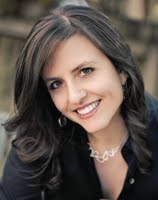 By the time Skloot met Henrietta’s family members in the late 1990s and started interviewing them for her book, many of them, including her grown children, trusted no one, especially Caucasian reporters who wanted to know about Henrietta’s cancer cells. But because Skloot cared so much about Henrietta's story and knew it like her own, Henrietta's relatives started to trust her and share important information with her. By the time Skloot met Henrietta’s family members in the late 1990s and started interviewing them for her book, many of them, including her grown children, trusted no one, especially Caucasian reporters who wanted to know about Henrietta’s cancer cells. But because Skloot cared so much about Henrietta's story and knew it like her own, Henrietta's relatives started to trust her and share important information with her.
Besides introducing readers to Henrietta Lacks, her husband, and her children, Skloot skillfully informs readers about cell research and medical discoveries. Skloot also writes about the ethical issues, court cases, and laws surrounding these cells and other cell lines from patients, who didn’t realize that doctors were using them for research and making money from them. She takes a complex issue and writes about it so anyone can understand the science, medicine, and law. But more importantly, she intersperses the often heartbreaking personal story of Henrietta among the scientific fact.
The most captivating chapters of this book are the real stories of the Lacks family’s struggles. For example, Skloot befriends Henrietta’s daughter Deborah, who was preschool age when her mother died. Deborah was on a quest for almost 30 years to find out what happened to her mother. All Deborah wanted was for her mother to get the recognition she deserved.
In one especially touching scene, Skloot writes about Henrietta Lacks Day on October 11, 1996 in Atlanta during a conference at the Morehouse School of Medicine. Dr. Roland Pattillo organized the first ever HeLa Cancer Control Symposium; and Deborah , her father, and her siblings attended.
Deborah spoke to the conference attendees and said, “When Dr. Pattillo called me, it all became real. For years, it seem to be a dream. . .Can this about our mother be true?. . .No one from the medical field took the time.”
If you are interested in biology and medical research, you won’t want to miss this book. But even more, if you are interested in human stories and how we are all connected to one another, then read this book and share it with others.
Review by Margo L. Dill, https://margodill.com/blog/, Follow me on Twitter: https://www.twitter.com/Margo_L_Dill Rebecca Skloot photo credit: Manda TownsendLabels: book review, Margo L. Dill, Random House, Rebecca Skloot, The Immortal Life of Henrietta Lacks
James Tipton--Third Place Winner in the Fall 2009 Flash Fiction Contest
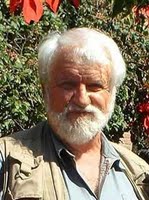 You might recognize James Tipton since this is the THIRD time he has placed in the WOW! flash fiction contests. You'll want to make sure and read his third place winner, "Getting to the Bottom of the Girl in the
Blue-Jean Cut-Offs."Here's some information about James in case you haven't met him before: James Tipton lives in the tropical mountains of central Mexico where he writes short poems and short fiction. He is also a columnist for and Associate Editor of El Ojo del Lago and El Ojo del Mar, monthly magazines published in Mexico for the English-speaking community. He is also book review editor for Mexico Connect, the largest online source for “all things Mexico”. He has published more than 1,000 short stories, poems, articles, and reviews in North American magazines, including Esquire, The Nation, Christian Science Monitor, American Literary Review, and Field. His book of poems Letters from a Stranger (with a Foreword by Isabel Allende) won the Colorado Book Award in 1999. His most recent collections of short poetry are published in bilingual (Spanish and English) editions: Washing Dishes in the Ancient Village/Lavando platos en el antiguo pueblo and All the Horses of Heaven/Todos los Caballos del Paraíso. He is currently completing a collection of short stories set in Mexico, Three Tamales for the Señor. Washing Dishes in the Ancient Village is available through Bread & Butter Press/1150 S. Glencoe/Denver, CO 80246, $10.95 plus $3.00 shipping & handling. All the Horses of Heaven is available through www.themetpress.com, $12.95 plus $4.00 shipping & handling. WOW: Congratulations on your third time placing in the WOW! flash fiction contests. What makes you enter your work into contests? James: Well, I do not feel particularly competitive, but I do find the WOW! contests fun and also stimulating. Having a deadline, which I keep track of, makes me sit down and do something. WOW: We're glad you find the contests fun, and the deadline works for you! Where did you get the idea for "Getting to the Bottom of the Girl in the Blue-Jean Cut-Offs?" James: I lived for many years in western Colorado, and I often saw interesting young Indian women. I also knew many men over the years who had never seemed to be able to "settle down" into a reasonably secure and reasonably well-paying position, partly because of their own characters and partly because of the changing academic world. Women often seem to have a stronger sense of reality. In my story, the man wants to "get to the bottom of the girl in the blue-jean cut-offs;" but of course, what he really wants to do is get to "the bottom of himself," but he does not realize that. WOW: I love the title, and your "twist" makes it a great flash fiction piece. What are the themes you like to explore in your work?
James: I write a lot about male-female relationships, and I try not to bias my stories and themes--at least looking over a lot of them---either way. Lurking inside of every relationship is the possibility of huge personal growth. We no longer look for God or spiritual meaning in old religious documents or in building churches with ever higher spires. In our own time, we look for God or spiritual meaning in relationships. The person in front of us is the church that we must enter, even kneel down before. Lots of writers are working with this theme...for example, the Canadian writer Leonard Cohen (the song/poem "Suzanne," for example: "who takes you down to her place by the river; or the song/poem "Light as the Breeze" where: "she stands before you naked" and then something like "it don't matter how you worship/as long as you're/down on your knees.). I've always enjoyed the company of women a lot more than the company of men, so I may have some bias there after all. WOW: You're certainly fitting right in at WOW! (smiles) Do you like to focus more on your characters in your work, your setting, or your plot?
James: I always focus more on the characters, and any plot I have is largely "character-driven". I do use settings toward revealing character. I have lots of stories set in Mexico, for example. Both characters and actual people reveal themselves in foreign or at least unfamiliar settings. How they respond to those settings tells us a lot about their characters. In one aspect, they are "setting-driven" characters, or "situation-driven" characters might be another related idea. I'm trying to finish a collection of short stories, Three Tamales for the Senor, set in Mexico, in which these ideas are working. WOW: What a great title, and I'm sure it is a fantastic collection. We know you can sure write a short story! Tell us a little about your writing routine.
James: I often go days and days at a time writing something, often for hours. I do this partly because I write a column each month; I write a book review each month for another magazine; and I write various pieces I have promised to still other magazines. Then, for fun, I work on stories and poems, particularly short poems of late. I usually write in the mornings and in the evenings. WOW: It sounds like you are keeping busy with all your writing responsibilities. What are you currently working on? Any more contest entries in the future?
James: I'll probably try some contests in the future, perhaps even a WOW! contest. I really thought I would receive first prize this time because I had worked so hard on that story, "Getting to the Bottom of the Girl in the Blue-Jean Cutoffs," honing it and honing it--so that when I finally sent it, I thought I had it perfect. I also have a collection of poetry, in both English and Spanish, about finished, titled To Love for a Thousand Years, as well as that collection of short stories I already talked about.
WOW: Best of luck to you in the future, James, with all your writing projects.
Interview by Margo L. Dill, margodill.com/blog/
Labels: Fall 2009 Flash Fiction Contest, James Tipton, Margo L. Dill
Young Adult Power Surge
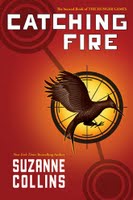 Young adult literature is taking the world by storm right now, and I'm so excited that I get to be a part of providing information to readers about what I like to call the "young adult power surge." I was lucky enough to guest edit the current March/April issue of WOW!, which went live TODAY. And it's all about YA! This issue is full of awesome articles about censorship issues, voice, writing nonfiction for teens, using technology to reach readers, finding inspiration for this age group, and more. You don't want to miss any of the articles if you are a YA writer, a wanna-be YA writer, or a YA reader. Just click on the link to the WOW! e-zine over to the left of this post, and you'll be taken to the issue. Some of my friends, who are over the age of 30, love YA books and are always recommending them to me. They actually read more YA books than adult books; and when you pick up books like Catching Fire by Suzanne Collins, Crank by Ellen Hopkins, or City of Bones by Cassandra Clare, it's not hard to see why. Not to mention the Twilight and Harry Potter crazes--teens aren't the only ones responsible for shooting Stephenie Meyer and J. K. Rowling to stardom--adults love them, too. What is it about this genre? Why is it so popular? Why are adults, like me, marking down the date on their calendars for the release of the last book in the Hunger Games trilogy this summer? I wish I had the magic answer, but I don't. Sometimes, I think it's because we all wish we were teenagers again, but with the knowledge we currently have. So, when we're reading these books, we picture ourselves in this turmoil and how we would get out of it with all our new-found knowledge. Other times, I think we love YA because the writers work so hard to present honest characters in unique situations, and we just fall in love with them. Could it be because these books are just plain good? What about you? Do you love YA literature even though you're an adult? What are some of your favorites? And by all means, if you have the magic answer of why YA is so hot right now and/or why we love it so much no matter what our age, please share with us! Happy reading and writing! Margo L. Dill https://margodill.com/blog/
https://www.twitter.com/Margo_L_DillLabels: Margo L. Dill, YA, YA literature, YA writing
Photo Caption Contest: Win Fabulous Prizes
 WOW!’s 1st Ever Photo Caption Contest WOW!’s 1st Ever Photo Caption Contest
2. Write your photo caption in the comment section of this post.
3. Please include your name, e-mail address, and where you heard about the contest. (a friend, another blog post, blog subscriber, Twitter, Facebook, etc.)4. You may only enter the contest two times with two separate comments.
5. One photo caption per each comment, please.
6. Comments should be for a family audience. WOW! team members reserve the right to remove any comments from the site and disqualify the writer from the contest.
7. The photo caption contest goes until Friday, February 26 at 11:59 p.m. CST.
8. Two prizes will be awarded for this contest:a. THE BEST CAPTION: Members of the WOW! team will choose the best caption—the best could be clever, witty, or funny. This writer will win a WOW! prize pack, which includes a year-long subscription to Premium Green ($48 value), a WOW! t-shirt, a WOW! sweatshirt, a book, and a WOW! tote bag. b. PARTICIPATION PRIZE*: We will also be awarding one participation prize. This prize will be given to a writer who wrote a caption that we randomly choose from all the comments. This writer will be awarded a WOW! tote bag, a WOW! t-shirt, a WOW! sweatshirt, and a book.
(*Facebook fans who were already notified of being entered into the Facebook #3 contest before it was canceled will be automatically entered into the participation prize contest.)
9. Winners will be notified by e-mail and announced on The Muffin on Wednesday, March 3.
Okay, we can't wait to see these captions! Make us smile, makes us laugh, make us wish we could be so clever. . . Labels: Margo L. Dill, photo caption contest, WOW prizes
Social Networking for Authors: Tips from Margo L. Dill
 This was the first year WOW ! branched out into social networking by creating Twitter and Facebook profiles, and it's already done so much for our site. We get to interact with our readers, really get to know them, and obtain feedback instantly. Our traffic has increased from links coming from the networks as well, and it's also a lot of fun! At the head of our social media campaign is WOW ! contributing editor, columnist, and instructor Margo L. Dill, who launched our campaign from scratch. She knows a great deal about using these sites to your advantage, so I caught up with her to ask her a few questions about her upcoming e-course Social Networking for Authors: Twitter, Facebook, LinkedIn and more!. If you want to learn how to effectively use social networking platforms for self-promotion, there's still time to sign up for her course, which starts next Monday (February 22nd). Welcome, Margo! Who should take your social networking class? Is it only for authors?Margo: My social networking class can help anyone who has something to promote--a blog, a website, a book, a magazine, or a newsletter. The class will give tips on how to find other writers on social networks; find clients, customers, or readers; and how to interact on these sites so people get to know the "real" you. This means, you are a real person with a personality sending out tweets or promoting your Facebook profile or fan page--not a marketer or a spambot! That's great to know. It sounds like it would be useful for freelance writers and small businesses as well. You teach your students how to use Twitter, Facebook, and LinkedIn. Why is it important to use all three platforms? What are the major differences?Margo: In my opinion, each social networking site offers writers, or anyone really, a different audience, format, and way to connect with others. On Twitter, you can follow almost anyone who has similar interests as you, provides useful information, or makes you smile and laugh. In turn, anyone can follow you. People expect you to share information on Twitter about yourself and your work as well as share other useful tidbits you come across on the Internet and on Twitter itself. On Facebook, you can connect with people who you once knew, that you met at a conference, or through an online group as well as your family and friends. You can belong to writing groups on Facebook that provide information and where you can network with other writers such as on the WOW! Women On Writing Facebook Fan Page. On your Facebook wall, you can promote your latest blog post or book just like you can on Twitter, but you do it with posts on your wall or status updates or fan pages. I get a lot of response from my family and friends on my blog from my Facebook page. These people wouldn't know what I was up to if I didn't have Facebook to tell them. I am reaching a different audience here and on an even more personal level than on Twitter. LinkedIn is a completely different network all together. It is for professional connections more than personal ones. You can connect with others and find freelancing work or discuss the publishing business in a LinkedIn group. You can find editing clients or promote your magazine or business to find customers or even employees. It's like having a resume online with recommendations right there for people to view. LinkedIn is great for networking. That's a really great explanation. And it's so true...people wouldn't know what you were up to if you didn't have Facebook to tell them. I guess you could send direct e-mails to everyone, but people get annoyed with too much e-mail, and I think Facebook is far less intrusive. Plus, it's pretty effective! I've personally seen a great response from WOW's social networking campaign. Thanks, Margo! It especially works well for us since our e-zine is a static website and these additional platforms allow for interaction. Do you recommend students have a website, blog, or portfolio page set up somewhere to link back to before they start networking?Margo: Not necessarily. It helps to have a blog or website, but some people will link to their book on Amazon if they want to tweet about their book or include a Barnes & Noble link in their status update on Facebook. You can also take part in Twitter chats in all sorts of subject areas such as general writing, YA literature, children's writing, romance writing, and so on. You just have to know the hashtag (which you'll learn all about in my class) keywords such as #YAlitchat, know the time it takes place (which is easy to find on the Internet), and then log on to Twitter and get started. You just take part in the conversation, usually about a hot topic, and give your opinion with the hashtag included. You don't need a blog, website, or profile page to do this, and you can learn from other writers about marketing, writing, querying, or any number of subjects and connect with other writers in your field. You can easily network on Facebook by starting a fan page for your book or business, and you don't need your own website to do this. Your fan page becomes like a type of website or profile page. That's genius! I mean, why not, right? It's really all you need come to think about it. But when someone just starts out with a social networking site, it can often feel like a ghost town because they don't have any followers yet. What's the quickest way to build a following?Margo: I suggest allowing the site to go through your e-mail address book and finding your contacts who are already on the site. This is the easiest way to get started with people that you know will help you through the beginning stages of the site. With Twitter, there are directories you can use such as Twellow to find people who have similar interests to you. On Facebook, you can join fan groups and meet people that way as well as searching by your college or high school. On LinkedIn, you can ask your connections to introduce you to others. I have several more tips and ways that I built my personal followers as well as WOW !'s, which will be part of the tips and lessons I share in my class. Those are some fantastic tips! I definitely want to check out those fun Twitter hashtag chats. It sounds like a mini-conference! Thank you so much, Margo, for sharing your tips with us today. :)
Readers, if you're interested in promoting yourself through social networking or simply want to learn how to use the different sites effectively, remember, Margo's class Social Networking for Authors: Twitter, Facebook, LinkedIn and More! starts next Monday, February 22, 2010. It runs for 4 weeks. Visit the classroom page to view what you'll be learning week by week. Enroll today to reserve your spot. Happy writing!
Labels: Margo L. Dill, networking class e-course, online author promotion, social networking for authors and writers
Romancing with Kristan Higgins, author of The Next Best Thing
 Happy Valentine's Day! We have the perfect author, Kristan Higgins, on The Muffin today--one who knows plenty about love, romance, and food (which just goes hand-in-hand with romance, right?). Kristan is here to talk about her new book out from Harlequin and to share her knowledge about keeping story lines fresh and interesting when writing genre books. So, without any hesitation, let's get right to Kristan! WOW: Welcome to The Muffin, Kristan. We are so happy to talk with you today. Your book, The Next Best Thing, is out from Harlequin this month. What do readers need to know about your latest book? Happy Valentine's Day! We have the perfect author, Kristan Higgins, on The Muffin today--one who knows plenty about love, romance, and food (which just goes hand-in-hand with romance, right?). Kristan is here to talk about her new book out from Harlequin and to share her knowledge about keeping story lines fresh and interesting when writing genre books. So, without any hesitation, let's get right to Kristan! WOW: Welcome to The Muffin, Kristan. We are so happy to talk with you today. Your book, The Next Best Thing, is out from Harlequin this month. What do readers need to know about your latest book?
Kristan: Thank you, Margo! It’s lovely to be here today. The Next Best Thing is about Lucy, a young widow trying to find a not-so-bad guy to marry, so she can have kids and move on with her life. She’s not looking to fall madly in love again — she was obviously devastated when her husband died five years ago, and she doesn’t want to be that vulnerable this time around. So, the first thing she does is distance herself from Ethan, her best friend and more recently, her friend with privileges. Their relationship is complicated, and he’s pretty much the last guy Lucy would pick as husband material.
One of my favorite things about this book is Lucy’s profession and her family, which are very much intertwined. Lucy’s a very talented pastry chef, but she works in the family bakery in the bread department while her aunts make these rather tired and uninspired pastries, cookies, and cakes. Lucy loves the family bakery and adores her aunts; but they’re all widows, too. And in Lucy’s family, you don’t remarry. You get one shot at love; and if he dies, well…that’s your bad luck. So Lucy’s bucking tradition, as it were, and it makes for some very funny scenes. And of course, it was really fun to write about all those gorgeous desserts.
WOW: What a great premise with the aunts! I love it, and I'm sure readers get hungry reading your book. I hear there's a great recipe in this book AND in your book Too Good to be True. How much does cooking play into your plots and love stories?
Kristan: Well, food is a great part of life, don’t you think? One of the things I try to do is create a character the reader can really feel she knows and an important detail is favorite food. In Too Good To Be True, Grace consoles herself with Disgustingly Rich Chocolate Brownies, wh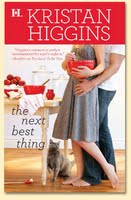 ich she also brings to the hero to apologize for an unfortunate incident involving a field hockey stick and the police. ich she also brings to the hero to apologize for an unfortunate incident involving a field hockey stick and the police.
In The Next Best Thing, Lucy’s profession revolves around food, of course. Her late husband was a chef, and her in-laws own an Italian restaurant; so yes, food is very important! One of the things that hints at my characters’ feelings is what they eat…and what they don’t. And yes, I’ll be posting more recipes on my website…I do love to bake, so these are all tried and true.
WOW: Just the name of those brownies from Too Good to be True sound absolutely delicious! Food and romance just seem to go together--you're right. You have several contemporary romance books out from Harlequin and more to come. How do you keep your story lines fresh and interesting since we all expect the happily ever after at the end of a romance?
Kristan: I think the first thing I do is try to be honest about the pitfalls of relationships. My characters are very real people — no one is a billionaire, staggeringly beautiful, or breathtakingly talented…in other words, they’re us! I also try to focus on the heroine’s immediate dilemma, then pick the guy who seems to be the very worst choice for her. Of course, he’s really the right guy, but I want the couple to have to earn their happily ever after. And I focus a lot on family. Families shape us into the people we are; they know our best qualities and our weak spots, too. And weaving them into the story feels very natural for me.
WOW: I like that idea of the family being involved in your books because families are so involved in our love lives whether or not we want to admit it. I love the animals on the cover of all your books. The Next Best Thing has a gray cat, looking ready to eat some of whatever your heroine is mixing in that bowl. Where did the idea come for animals on each cover? Do animals play an important role in each novel?
Kristan: The amazing people in the Harlequin art department design my covers, so I can’t take any credit, though they give me a little preview, which is always thrilling. Personally, I’ve always had pets (mostly dogs, a few cats thrown in to keep me on my toes); and making my heroines pet owners wasn’t so much a conscious decision as just a normal part of life. But I choose the heroine’s pet very carefully, and that pet reflects something about the character. In The Next Best Thing, Lucy’s cat, Fat Mikey, is a very independent animal. Dogs, in my opinion, require a lot more attention and devotion. And when Lucy acquires Fat Mikey, she’s still really hurting over her husband. It felt like a dog might be too much. So Fat Mikey keeps her company, but he doesn’t get too sentimental, either.
WOW: What a great way to reveal things about the characters through their pets. That's genius! (I'm a big pet lover, too.) You also have a blog that you regularly update. What types of information will your fans find on your blog? 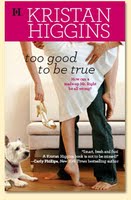
Kristan: My blogs on my own website are just little vignettes about my life as a writer and as a person. I’m pretty normal…married to a real sweetheart, mom of two great kids. I’m very close with my siblings, adore my nieces and nephews, have lunch with my mom, volunteer in our town, carpool the kids around. If anyone has any illusions about the glamorous life of the writer, they need only check in with my blog and get a reality check! There are no silk pajamas here…my dog would drool all over those, and the cat would shred them in a heartbeat.
WOW: I'm sure your fans love to read about your life, and that's a good idea for blog posts! What are you working on next?
Kristan: Right now, I’m finishing up the edits on All I Ever Wanted, which comes out this August, and working on another romantic comedy. One of the things that’s most fun about being a writer is figuring out which of your ideas is ready to be teased out into an entire book…you never know which seedling is ready to sprout.
WOW: We are so excited, Kristan, that you shared your insights about your books and your writing life with us today. We look forward to many more great books from you to keep us reading and smiling!
Interview conducted by Margo L. Dill https://www.margodill.com
*If you're an author interested in being interviewed and/or promoting your book, please contact Margo at margo (at) wow-womenonwriting.com for details. (Replace at with @)
Labels: Harlequin, Kristan Higgins, Margo L. Dill, Romance Writing
A Spoonful of Chocolate Hope with Michelle Pulis
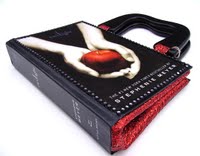 Look at this--you could have your very own Twilight purse! I'm sure there are a few million teenage girls who would love to open that up as a gift; and that's what Michelle Pulis, owner of A Spoonful of Chocolate Hope, hopes, too. At her online store, she sells these super-cute handmade book handbags, bookshelves, book passport holders, and chocolate stirring spoons. And she started her company to help her family! So, we're interviewing Michelle today to get the full story on the cutest purses around and the reason for starting her business. WOW: Welcome, Michelle, to The Muffin. We are thrilled to have you with us today. Why don't you start out by telling us a little about your business, A Spoonful of Chocolate Hope. What types of products do you make and sell?
Michelle: Everything you see in my shop is made by hand! I originally started my shop making chocolate stirring spoons for your coffee. However, that idea backfired in the sweltering Arizona heat, and I ended up changing my product completely to making and selling handbags created from used books. Initially, I would just donate the pages to a local refugee placement committee here in Arizona; however, I noticed many of my customers also wanted the pages. So, I started giving the buyer's the option of re-binding the book with the matching fabric used for th e handbag to make a unique gift set! Another product I offer is passport holders/wallets disguised as books to keep the pick-pocketers away while traveling. And my newest product is making a bookshelf out of used books. It makes a great addition to any home library. e handbag to make a unique gift set! Another product I offer is passport holders/wallets disguised as books to keep the pick-pocketers away while traveling. And my newest product is making a bookshelf out of used books. It makes a great addition to any home library.
WOW: So, you create handbags made out of books? What an awesome idea! They are super cute and great for book lovers, but how sturdy are these?
Michelle: Very sturdy actually! I have tested the purses for sturdiness and quality. Each book is made from a good quality recycled book. I put finish on it to prevent any rips and tears. I have been carrying around my book handbag for about a year now and have had no problems whatsoever!
WOW: That's great to hear that the products are cute and sturdy! Why did you start your company?
Michelle: Spoonful of Chocolate Hope was created to help my father save his house. It's a long story, so I'll try to make it as short as possible. My father is a simple man who immigrated from what is formally known as Czechoslovakia in 1969, searching for a better life. Growing up, I watched him build our house with his own two hands, constantly adding things that reminded him of Czechoslovakia. A couple of years ago, my mother's brother (Frank) asked for my father to co-sign a loan for a business he was starting. My father wanted nothing to do with it; he had worked hard to get out of debt and didn't want anything in his name. My mother and uncle constantly asked about the loan, until my father finally gave in.
Uncle Frank is now basically homeless; his business has gone into bankruptcy and is now unable to pay off the loan. My parents are now forced to pay $3,000 a month with a combined income of $27,000 a year. So I created this site to give my parents 100% of the profits. Wanting to give my father back some of the life he worked so hard on achieving.
WOW: What a great reason to start your business. Not only do you offer a unique product, but it's also for a fantastic reason. So, you have to be an awesome time manager because you work a full-time job, and you come home and make all your products for customers by hand! Give us some tips. How do you do it?
Michelle: Well, I manage to do my book and fabric shopping during my lunch breaks or immediately after work. I go to the post office in the morning on my way to work. I typically spend a few days a week and my weekends, sitting in front of my TV with fabric and books spread all over the floor. I actually really like making them. It relaxes me. And sometimes in between, I manage to spend some time with my very supportive boyfriend. (Even though he refuses to help. . .) (smiles)
WOW: It's easy to see that you are very dedicated to your cause and your business. It reminds me of the saying, "Where there's a will, there's a way." I think some of us, as writers, can learn from your time management skills! That's for sure. Why do your book handbags and other products make perfect gifts for family and friends?
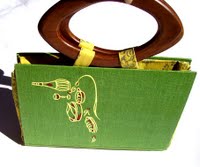 Michelle: Because they're so personalized! You don't even have to like to read. Just think of a hobby your loved one has, and I can find a book related to it. I have made cookbook handbags for the chefs of the house, Van Gogh book handbags for the artists, Atlas briefcases for the World travelers. . .and the list goes on!
WOW: Those are great examples! What are your future plans for us to look forward to?
Michelle: I'm actually hoping to start making table lamps out of books, and maybe even branch out to furniture and start making side tables out of books. I always have something brewing in my head!
WOW: Thanks, Michelle, for talking with us today! Okay, women writers, we know you love books, so if you want to check out all that A Spoonful of Chocolate Hope has in store, visit here!
interview conducted by Margo L. Dill, https://margodill.com/blog/
Labels: book handbags, gifts for writers, Margo L. Dill, Michelle Pulis, spoonful of chocolate hope
Tricia Bowering: Summer 2009 Flash Fiction Contest Runner Up
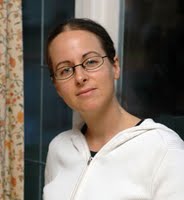 Congratulations to Tricia Bowering! She is a runner up in the 2009 Summer Flash Fiction contest. If you haven't read her short story, "Remembrance," yet, then you can check it out here. Here's a little about Tricia:Tricia Bowering was born and raised British Columbia, where she eventually studied psychology at the University of Victoria. She now makes her home in Vancouver, where she keeps busy with work and spending time with her family. She recalls writing short stories as early as grade two and all throughout high school, but years of study and work slowly pushed writing aside. Finally, she has returned to writing as a serious pursuit and has enjoyed reconnecting with her creative voice. She looks forward to writing more short fiction and entering lots of contests in the future. By the way, Tricia's been here before. She also placed as a runner up in the 2009 Winter Flash Fiction contest! WOW: Congratulations, Tricia, on your second win in WOW!'s flash fiction contests. What made you enter another one of your stories in this contest?Tricia: It is such an honor to be recognized by the WOW! team for this contest! I truly enjoy the process of writing, and very short fiction is a challenging yet rewarding, medium. Once the story is done, it’s always fun to have your work out there for others to read, and placing in the contest is a bonus. I also appreciate the critique option that’s offered, as it’s always valuable. I took the last suggestions to heart and experimented with a new writing process for this contest. WOW: Thanks for sharing information about the critique service that is offered with the contest. Many writers have probably wondered if it's worth the extra fee; and obviously, you are benefiting from it! How is this winning story similar to or different from your other story, "When My Grandmother Made Perogies?"Tricia: The stories ended up having very different styles. In my previous entry, "When My Grandmother Made Perogies," I started with a memory from my distant childhood and developed that idea, so that imagery took center stage. The description of the event (the sights, smells, and feel of making perogies), became a central feature; and the interaction between granddaughter and grandmother was almost secondary. With "Remembrance," I started with a pivotal event: a public health nurse’s visit to an elderly client in the community, suffering from dementia. I tried to use description effectively once again to evoke setting and character; but this time, I focused more intensely on the interactions between the nurse and her elderly client. I also tried to develop a coherent plot with beginning, middle, and end. WOW: And that's not easy in under 750 words! In this season's story, "Remembrance," you explore the theme of dementia in the elderly. Why did you write a flash fiction story on such a complicated and heartbreaking issue?Tricia: Indeed, this theme resonates with me; both in my career and personal life, I’ve known individuals who have dementia. This illness forces us to confront our feelings around loss, and it is not easy. I hoped to show that there is so much value in a person’s life (as Anita can see as she tours around the house and sees clues of a life well-lived) and not to forget that when confronted with a person who may need help in the face of this devastating illness. I was also taken with the way that Anita had to confront her fears and sadness over her own mother’s illness, leading to a real sense of connection between Mrs. Simpson and Anita. Their roles as nurse and patient were briefly reversed when Mrs. Simpson comforted her. WOW: It's easy to see, even from your description here, why this was a winning story. It's a well-crafted story with a well-developed theme. When you sit down to write a flash fiction piece, what is your process?Tricia: I’m not sure I have one process. Occasionally, the writing flows naturally from a scene in my mind, or a memory; and I sit and write the whole story in one sitting. Other times, like with "Remembrance," I take my time, lingering over each sentence. Often, the hardest part is to get the first draft onto paper; but after that the editing process can be fun--shaping the story into what may turn out to be something quite different than I first imagined. WOW: I agree 100% that editing and revising your work can be fun. I am always saying to myself, "Just get it on paper. You can do it. It doesn't have to be good." (Smiles) Flash fiction writing usually takes a lot of revision and a lot of word-cutting. (Sometimes, it's harder to write a short piece than a long piece!) What is your revision process like? How do you decide what to cut?Tricia: As I mentioned, I find self-editing a fun, but challenging, process. In the first draft, I let all my ideas flow freely without much thought to the final product, and that’s a crucial part of my creative process. However, when it comes time to edit, brutal honesty must prevail. For the second draft, I concentrate on story essentials: plot, character, setting, and how description and dialogue help those elements come together. Once I have the story that I want, I pick through the draft several times for unnecessary words, such as those pesky adverbs. Any sentence or description that doesn’t directly serve the story is cut. Flash fiction is good discipline! I usually agonize over the last two or three words for a couple of days before I finally send my submission. WOW: Let's repeat that quote for all to read again: "Flash fiction is good discipline!" I love how you mention those pesky adverbs and how you agonize over two or three words. It shows in your writing that you're carefully choosing your language and sculpting your work. Have you made any 2010 writing goals or resolutions that you could share with us today?Tricia: Absolutely. I took a writing course last fall; and now I’ve become a part of a writing critique group. It’s a great development because making a commitment to submit writing for the group every month keeps me motivated. I may take another course later in the year (perhaps on self-editing!), and I’d like to enter another WOW! contest. Thanks again for giving emerging writers this opportunity. WOW: You're welcome, Tricia, and good luck with your goals. We wish you much success in 2010.
Interview by Margo L. Dill
https://margodill.com/blog/
https://www.twitter.com/Margo_L_Dill
Labels: Margo L. Dill, summer 2009 flash fiction contest, Tricia Bowering
Marketing Self-Published Books: More Advice From Joy Wooderson
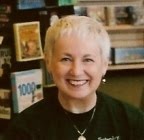 Last week, we talked with Joy about her self-publishing journey for her memoir, Finding Joy. If you are struggling with whether or not to invest in self-publishing, her interview might give you some answers you've been looking for. In this segment, Joy discusses how she is marketing Finding Joy: One Woman's Journey Back to Faith. As we all know whether you self-publish your book or publish at a small or large house, the marketing falls on the author. So, grab a cup of tea, and take a few minutes to learn some tips from Joy. Margo: Welcome back to The Muffin, Joy. We learned a lot from you last week about self-publishing and the choices you made. Today, we're exploring marketing your self-published book. What types of marketing are you doing for Finding Joy?Joy: It had become increasingly clear to me that authors are now pretty much on their own when it comes to marketing their books, whether they are self-published or not. So I began by creating postcards on my computer, showing the cover, and “I’m pleased to announce . . .” on the front with distributor and contact information on the back. I mailed these to friends and other parties whom I felt might be interested. I also e-mailed the information to everyone on my contact lists. I had compiled a list of people to whom I wanted to send a copy of the book in addition to close friends, relatives, and those individuals who had played a major part in the development of the book. My hope is that these people will be willing to read it and share their comments. I also created bookmarks on my computer, showing the cover, a brief synopsis, distributors, and contact information on the front. On the back, I listed excerpts from two or three reviews. I included several copies of the bookmark as handouts with each sale. A neighbor organized a community book-signing which was not only enjoyable but highly successful. I also participated in the Author Open House at the library. I joined Facebook, SheWrites, Women On Writing, and other social networking websites in order to spread the word through these avenues. I contacted two independent bookstores and placed copies on consignment in each. My package with BookSurge included a review by Kirkus Discoveries, which was forwarded to their distribution listings. Regrettably, most newspapers will not review self-published books. Margo: WOW! You gave us a lot of great tips here. I like how you've tried many different types of marketing ideas, and you are getting out there and meeting people. You're not waiting for people to come to you! What are you finding to work the best?Joy: What I knew would be the best avenue for Finding Joy: word of mouth. My top sales have come from people who know me and who, in turn, have purchased copies for others. I knew going into this project it would not be a speedy process, given the nature of the book. However, I feel I have planted seeds and now wait for them to germinate and grow. I am grateful for the excellent review on A Book A Week Blog, for this interview opportunity, and the positive comments I continue to receive from readers. Margo: Your attitude is so awesome! I love how you are being patient, as hard as that is (I'm sure), and continuing to pass the message on about your book. What are future marketing ideas you have or would like to try?Joy: I’m feeling my way in this new venture and am open to any and all suggestions. I am exploring meeting with small church groups, donating to the local library district, setting up additional book signings, and taking advantage of whatever opportunities may arise. Margo: Those all sound like great ideas. Hey, maybe a church group could even Skype you into discuss your book with them! I've heard of some authors using Skype to visit with book groups and school groups that are reading their book hundreds of miles away. So, update us: besides marketing Finding Joy, what are your current projects you are working on?Joy: At the end of the section on “Self” in Finding Joy, I write: “My daily prayer for wisdom led me to the inescapable conclusion that, like it or not, I was going to have to delve into my emotional and psychological background, to examine the developmental rings of my own ‘tree.’ I had no idea at the time that this exploration would be so wide-ranging it could fill another book.” I’ve decided to complete the manuscript for Recovering Joy: One Woman’s Journey to Personhood and Place.Margo: A sequel of sorts! That's great. Good luck to you while you market your current book and work on another.
Here's more information about Joy Wooderson and her book, Finding Joy.
Ladies, if you have any questions for Joy, please feel free to leave them here. We hope you have some new ideas and/or inspiration for marketing your work. Also, if you have a great marketing tip for us, please leave it in the comments below.
Thanks!Margo Dillhttps://margodill.com/blog/
Labels: Finding Joy, Joy Wooderson, Margo L. Dill, marketing tips
Learn to Write for Children: Tips from Margo L. Dill
 I've never tried writing for children's publications but I've always been intrigued by the idea. It must be so rewarding to reach out and entertain a child through your writing. I still remember all the articles and stories I read in magazines, such as Cricket, as a child. Maybe it's because I was so young that the stories stuck with me, or the fact that I was reading something I wanted to read for the first time. So to gain a bit of insight into this market, I caught up with Margo L. Dill and asked her a few questions on the subject. Margo teaches the e-course Writing for Children. The course begins next Wednesday, January 13th. If this is a market you've been thinking about writing for, I urge you to visit the classroom page and sign up today. Welcome, Margo! Like I mentioned above, I'm new to children's writing. So tell me, what are the different types of manuscripts children's magazines accept?Margo: Children's magazines accept short stories, poems, and articles. They also accept fillers, which are pieces like recipes, puzzles, quizzes, and arts and crafts. That's a wide variety, and it sounds like a lot of fun. If a writer wanted to craft a short story for a children's magazine, what things should she keep in mind to better target her market?Margo: I teach about the characteristics of a children's short story during the fiction lessons because writing a short story for children is very different than writing for adults. The age of the main character is very important and should be the same age or older than the target age range. For example, if you are writing a short story for readers between 8 and 12 years old, the main character should be 11 or 12. As a rule, children don't like to read about kids younger than them or adults as main characters. The other big mistake I see made in many children's stories, and we cover this in the class, is that the child protagonist does not solve his own problem. An adult swoops in and saves the day. Children want to read about other children solving their own problems. I never thought about it, but that makes complete sense. I think it's a good lesson too for children to learn how to solve their own problems. In your class curriculum you recommend sending a cover letter with a short story submission. Are cover letters important? Shouldn't the story stand on its own? Margo: Writing for children is a business. If you want a magazine editor to take you seriously, then you need to learn the business. On cold submissions, magazine editors expect to see a cover letter with your submission--this includes e-mail and snail mail submissions. The cover letter should be short and simple, just like you were sending a cover letter with a job application. The job application speaks for itself, but the cover letter highlights some important points. Same is true for a short story cover letter. It should briefly explain the story, tell the word count, why the story fits in the magazine, and a few of your credentials. That's it! Great advice, and it sounds simple enough. Let's talk nonfiction articles. You mention that it's easier to break into the children's magazine market with nonfiction. That's also true with the adult magazine market. In your opinion, how do these markets differ? Margo: The biggest difference is that there are fewer nonfiction children's magazines than there are adult magazines, so the competition is fierce. Therefore, you have to know how to research your market and your topic to give yourself an advantage over other freelance writers. You also must write a killer query letter, which we work on in the online class. Many children's magazines have theme lists; so before you send your query, it is important to see if your idea will fit in any of the themes. Some magazines will invite queries that do not fit in any themes for possible future consideration. Writing for children is similar to writing for adults, and it should be taken just as seriously. I bet your students love the query letter part of the class! And you seem to have had a lot of success with queries. You've had articles, short stories, poetry, activities, and recipes published in various children's publications. Quite an impressive list too, I might add! I'm sure writers who are interested in your class would love to break into these publications. But what if they don't have any clips? Is it just as important to have clips in the children's market as it is in the adult market?Margo: Thanks, Ang. I thought the different types of manuscripts I've had published showed I was a bit scattered, but I appreciate the compliment. (Laughs) Clips are not as important in children's magazines. If you are writing strictly fiction or poetry (which I don't recommend to ONLY write these), then you don't need clips. Editors want to see the entire manuscript before they make a decision. As for fillers, you also need to send the entire manuscript unless the guidelines say otherwise. Every once and a while, a magazine editor will ask for a query for a quiz idea, instead of seeing the whole quiz first. For nonfiction articles, clips can help you get published; but in general, children's magazine editors will accept a query idea on speculation. This means if you don't have a lot of clips, you will write the article because they like your idea, but they may or may not purchase it until after they read the complete article. That's great to know! I'm sure some of us are breathing a sigh of relief on the clip thing. So what do you ultimately hope students will learn from taking your course?Margo: Children's writing for magazines and websites is just as tough (or maybe tougher because there are less markets) than writing for adults. It is so important to have markets in mind before you write a story, article, or poem if you want to publish your work. Creativity is important, but published writers must use their creativity to craft a publishable manuscript, or it is a waste of time. I will show my students how and where to search for markets, how to target markets, how to craft a short story and submit it, and how to write a great query for an article. I also want them to see how fillers can be quite lucrative and motivating! When I taught this class in the fall, one of my students got an acceptance for a filler from a website during the class and became an educational writer for BrightHub.com. Thank you, Margo, for sharing some great tips with us today!Readers, if you're interested in breaking into children's writing, remember, Margo's class Writing for Children: Everything You Need to Know About Short Stories, Articles, and Fillers starts next Wednesday, January 13, 2010. It runs for 7 weeks. Visit the classroom page to view what you'll be learning week by week. Enroll today to reserve your spot. Happy writing! Labels: children's magazines, E-course, freelance writing, Margo L. Dill, online class, writing for children
|
 We are lucky to have Robyn Galbos from Demand Studios with us today to answer some questions we've received about becoming a writer for them. She has provided some tips for applying and writing articles and information about some of the new Demand Studios programs, so let's get started!
We are lucky to have Robyn Galbos from Demand Studios with us today to answer some questions we've received about becoming a writer for them. She has provided some tips for applying and writing articles and information about some of the new Demand Studios programs, so let's get started! 























